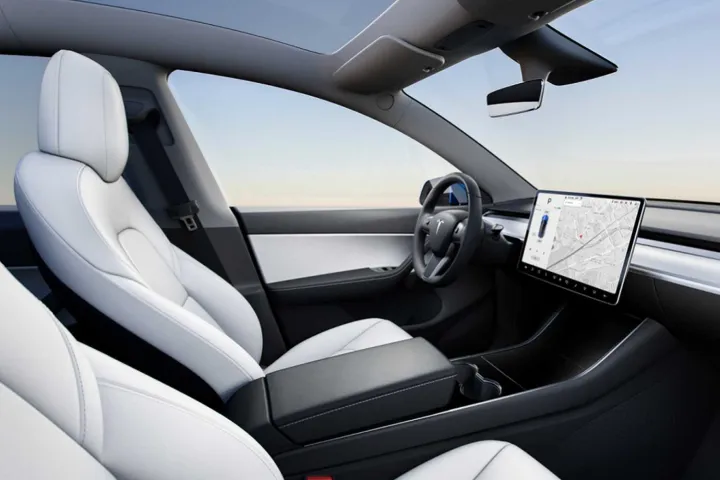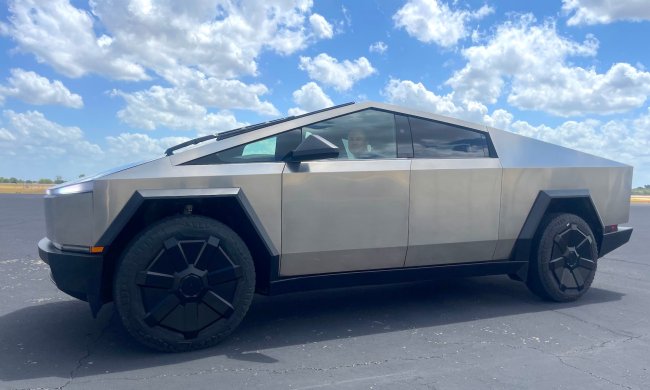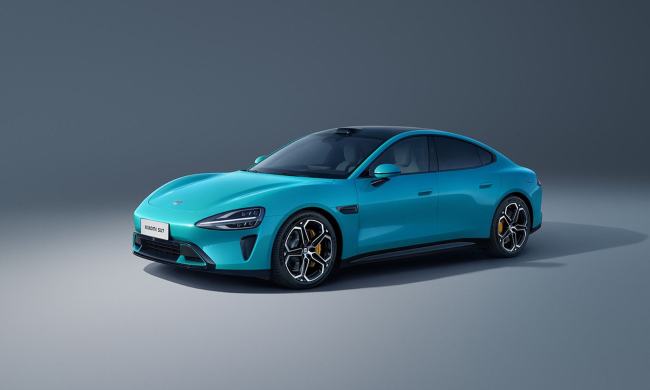Tesla has sold cars online since its inception. Early on in the company’s history, adopting a digital sales model was a way to avoid setting up a network of third-party dealers. Fast forward to 2020, and it’s turned into an excellent way to put new cars in the hands of customers while limiting in-person contact. Here’s how it works.
Find the model and version that suits you

To start, visit the company’s official website and select the model you’re interested in. Tesla currently sells six cars: The Model S, the Model X, the Model 3, the Model Y, the Roadster, and the Cybertruck. Only the first four are in production, but each one is offered in several configurations. For example, the rear-wheel-drive Model 3 is available in one configuration called Standard Range Plus, while buyers who need all-wheel drive can select the Long Range or Performance version.
Tesla clearly states the price of each car on its website, but it warns potential buyers that the figure it provides includes potential incentives and gas savings. Its site lists the entry-level Model 3 at $31,690, because the company deducts gasoline that owners will not have to pay for. The actual price of the car is $37,990.
Clicking on each version tells you precisely how much you’ll pay for it depending on whether you’re buying it in cash or financing it. You can estimate your monthly payment, which will vary based on the amount you put down, the length of the loan, and the annual percentage rate (APR). Tesla also lets buyers get a more precise estimate of how much money they’ll save after going electric by punching in how many miles they drive annually and how much they normally pay for fuel.
By entering their zip code, buyers can find out approximately how long they’ll need to wait before taking delivery. Shipping delays depend on location. As of October 2020, the Model 3 takes between six to nine weeks to ship if you’re in California. Motorists who can’t wait that long can buy a car from Tesla’s inventory.
Configure your car online

You’re ready to configure your car when you know which one you want, how much you’re going to pay for it, and how long you’ll wait before taking delivery. Configuring a Tesla is simple, because the company’s list of options is relatively short. With that said, the lineup changes on a regular basis, so what we’re listing below might not be what you see on Tesla’s site.
The entry-level Model 3 comes standard with white paint and 18-inch alloy wheels, for example. Tesla charges $1,000 for black, silver, or blue paint, $2,000 for red, and $1,500 for 19-inch alloy wheels. Moving on to the interior, the only option is a $1,000 two-tone black and white upholstery (shown above) available on upmarket variants. Autopilot is included, and full self-driving capability is a $10,000 option that doesn’t make the Model 3 autonomous — not yet. The company is working on driverless technology, and buyers who tick the box will receive it when it’s ready (and legally permissible) via an over-the-air software update.
Every Tesla comes with one of the industry’s most advanced infotainment systems. Version 10.0, released in September 2019, added Netflix and Spotify integration, an array of video games you can play while parked, and a cool but contentious feature named Smart Summon. The bad news is you’ll have to pay a monthly fee to unlock the car’s best features, though every new Tesla comes with a 30-day free trial.
Place your order

Once you’ve built your dream Model 3, Tesla asks for a one-time, nonrefundable $100 order fee before it processes the order. You’ll need to create a Tesla account by entering personal information like your name, your phone number, and your credit card details. Tesla notes that buyers can modify their order after they send the deposit. The company assigns buyers a delivery adviser after it receives an order, and that person becomes the customer’s point of contact for the remainder of the transaction. All of the documents — including loan-related paperwork, if needed — are uploaded online, so there’s no need to visit a store.
What about a test drive?

Some Tesla stores keep a small inventory of cars for buyers who want to drive away in a new Tesla immediately. Customers can visit these locations to test drive the model of their choice before ordering it online, but the company pointed out that 82% of Model 3 owners purchased their vehicle without driving it first. Those who nonetheless want to try before they buy can contact their nearest store to arrange a test drive.
We suggest taking one for a spin before you sign the dotted line. Tesla used to let buyers return their car within seven days or 1,000 miles, no questions asked, but it got rid of this option in October 2020.
What about cars not in production yet?

Nearly half of the Tesla range isn’t in production yet. The Roadster (shown above) and the vintage Lotus-inspired Cybertruck won’t make their debut until 2021 at the earliest; only Elon Musk has driven the pickup so far, both on the streets of Los Angeles and in the classic Nintendo 64 game Golden Eye. The company gives buyers the option of reserving one of its upcoming cars to secure an early spot in line, and avoid long waiting times.
The reservation process starts on the company’s website. Log on, and click on the name of the model you want to get your hands on. Anyone can reserve a Cybertruck by selecting one of the three variants and sending the company a refundable $100 deposit. You’ll be asked to complete your order as production nears. The Roadster, which is shaping up to be Tesla’s flagship model, is more expensive. The firm asks for a $50,000 deposit to reserve the regular variant, or a $250,000 deposit for the limited-edition Founders Series version that’s expected to ship sooner.



